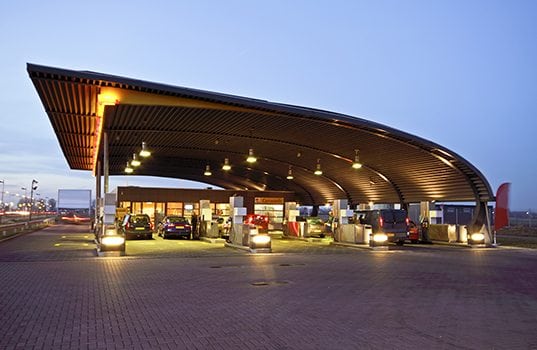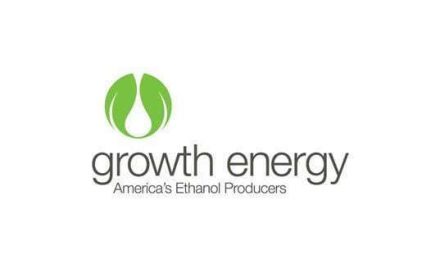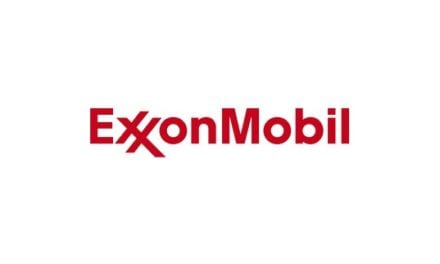“Fueled for Thought,” By Joe O’Brien, Source North America
In the world of retail fuel, 2017 will be remembered more for what didn’t happen (the outdoor EMV liability shift, for instance) than what did. Let’s reflect on what transpired this past year, take a look at what the future holds and, in some cases, separate fact from fiction.
Is It Disruption or Distraction?
The headlines this past year decried a future supported by traditional fuels. Electric vehicles (EVs) and/or autonomous vehicles are taking over. Petroleum-based fuels are going away. The combustion engine, personal vehicles, or gas stations – or all three – will soon go extinct. But if we dig a little deeper, we find that what at first seems like an imminent market disruption, might be more of a marketing distraction.
It’s true that technology is advancing quickly. Since mid-October the autonomous vehicle division of Google’s parent company, Alphabet, has tested driverless minivans on public roads without a human in the driver’s seat. Truly driverless cars are seeming less like science fiction every day. EV technologies also are improving — miles per charge are going up and development costs are coming down.
But in spite of bold commitments by some automakers and international communities to transition away from traditional fuels, history has shown that, in the United States, major market change begins with consumers. Besides, what is applicable overseas isn’t a perfect – or easy – fit here. The driving habits in the U.S. are very different than those in Europe, Latin America and China. The air quality here also is better.
U.S. automakers that are expanding EV product lines are in fact pursuing growth opportunities. But those opportunities are global opportunities. For instance, GM announced that it will launch 20 new electric and fuel-cell vehicles by 2023. Given the buzz about EV here in the states, it would be easy to assume that GM’s EV expansion is tied to demand in the U.S. But consider this: GM is selling more cars in China than in the U.S., and China is one of the countries aggressively pursuing an automotive future that is free of fossil fuels.
Further, EVs aren’t flying off the showroom floors here in the U.S. In fact, the top three selling vehicles in the U.S. as of November 2017 were three light-duty vehicles: Ford F Series, Chevrolet Silverado and Dodge Ram trucks. That’s not exactly a ringing endorsement for automobiles with the best fuel economy.
That notwithstanding, change IS coming. But it will probably take the maturity of today’s youth for EVs to surpass traditional fuels. When there is demand for EV in the U.S., automakers will answer in kind. But right now, it looks like that demand is likely still 15-20 years away.
EMV: A Year Without a Deadline
At the end of 2016, the major credit card companies postponed the deadline for U.S. gas stations to update their automated fuel dispensers (AFDs) from October 2017 to October 2020. In spite of the delay, the AFD conversion did gain some momentum in 2017. Here’s a look at where we stand with EMV now, and where we are headed in 2018.
The large gas station networks are leading the way in the EMV conversion. Most small and medium independent gas stations are waiting until the bigger chains have converted. Some retailers are already in the testing and certification phase, while many independent gas stations still have yet to develop a firm business plan for addressing the conversion.
Some sites are delaying the conversion so they can complete as many upgrades at one time as possible. For instance, marketers who introduce mobile wallet or connected car technologies at their dispenser during a single roll-out will realize cost savings. Additionally, some alternative secure payment solutions are emerging. One such alternative includes developing a payment center in the middle of the fuel island instead of including payment technologies at the dispenser.
Unfortunately, the deferral of the liability shift is creating a notable sense of complacency that may bite fuel retailers in their bottom line. According to published reports, merchants may still be liable in some instances. If a fuel site has excessive fraud-to-sales ratios and excessive chargebacks, then the merchant is responsible for all lost or stolen fraud and outdoor EMV counterfeit fraud. These merchants could face penalties in addition to chargeback liabilities.
Retailers need to remain vigilant about their site’s payment security. Several recent skimming incidents have been tied to sophisticated, multi-state criminal operations that are organized in nature. Because fraudsters with successful skimming operations harvest millions of dollars in fraudulent charges, criminals will probably milk it for all they can, while they can.
With that in mind, the Conexxus Data Security Committee developed a guide for site operators to protect the payment card data at dispensers. One of the recommendations included replacing universal/standard payment terminal door locks with locks unique to the location. Visit the Resources section of the Conexxus website at www.conexxus.org to learn more.
EMV: The Road Ahead
Most single-store operators lack IT departments and, therefore, don’t know where to begin with the conversion. But fuel sites that have not committed to a plan for dealing with EMV are taking chances with their future. With the bulk of retail fuel sites taking the wait-and-see approach, the availability of both equipment and technicians will become strained for the hold-outs.
All c-store operators who haven’t initiated an EMV plan should reach out to an AFD distributor as soon as possible to start a conversation about potential needs. A qualified fuel equipment representative will help C-store operators assess the EMV needs of their fuel sites and develop a timeline for addressing them before crunch time hits.
The ABC’s of EMV
EMV is highly technical and full of bewildering terminology. Do you know an AID from a CVM? Or the difference between “fallback” and “offline”? U.S. Payments Forum and Conexxus presented an EMV 101 tutorial in fall 2017. Watch the webinar, “Accepting EMV Chip Cards at the Fuel Pump,” at www.uspaymentsforum.org/accepting-emv-chip-payments-at-the-fuel-pump-webinar/.
General Policy and Funding Changes
With the arrival of new leadership at the White House in 2017, many regulatory and funding changes are on the table that will affect the fueling industry. Here’s the score on some of the key issues:
- Debit Swipe Fee Reform: Early this year a proposal to repeal debit swipe fee reform was rejected. This measure continues to protect marketers from absorbing inflated swipe fees issued by banks.
- EPA Budget Cuts: Almost $150 million in funding reductions are proposed for EPA programs. The funding shortfalls could cause states to absorb costs that the EPA previously shouldered. The proposed budget is expected to be voted on by end of 2017.
- E15 Waiver: Legislation to waive the fuel volatility standards for E15 stalled. But the issue isn’t altogether dead. The EPA has indicated that it would look into whether or not the agency has the authority to issue a waiver.
- Renewable Fuel Standard: Renewable Volume Obligations (RVOs) for 2018 will be nearly the same as 2017. The total volume will increase from 19.28 to 19.29 billion gallons. The Renewable Fuel Standard (RFS) maintains the 15 billion gallon ethanol mandate for 2018. The EPA also rejected petitions from refiners and industry associations in 2017 to move the point of obligation downstream to fuel blenders and distributors.
- Fuel Economy: The EPA is reviewing the Corporate Average Fuel Economy standards for cars and light trucks for model years 2022-2025. The existing standards call for more reliance on electric vehicles. This “Midterm Evaluation” is due to be completed by April 1, 2018, and is a story to keep an eye on.
- Road Funding: A federal budget proposal includes $200 billion to pay for transportation projects over 10 years. Details for the plan have not yet been defined. An increased fuel tax has not been ruled out. This is definitely another story to watch in 2018.
 Joe O’Brien is Vice President of Marketing at Source™ North America Corporation. He has more than 20 years experience in the petroleum equipment fuel industry. Contact him at [email protected].
Joe O’Brien is Vice President of Marketing at Source™ North America Corporation. He has more than 20 years experience in the petroleum equipment fuel industry. Contact him at [email protected].









